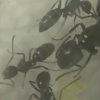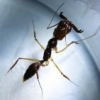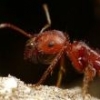MissLiz, on 08 Mar 2017 - 6:55 PM, said:
CamponotusLover, on 08 Mar 2017 - 6:38 PM, said:
Well I am not the best at identification... But I am 75% sure that is not fully claustral, so there's that. I could be wrong though, its just full-clastrual queens tend to have smaller heads and smallers jaws.
Of course though I tend to be wrong on 99% of all things.
Beautiful queen though!
I had to good what that means, 100% beginner over here. Haha. Does that just mean I need to offer her food? I have a test tube portal I can attach and add another tube to put food in if I need to.
Google*
Well-
If she's full-claustral then: She does not need to be fed until she has produced her first workers because she eats off of the fats in her gaster (what people call the big butt of the ant) and she is also to be kept in the test tube until she has a OK amount of workers.
If she's semi-claustral then: It is reccomended if she is semi-claustral that you get a see-through container, doesn't matter what kind of container, but one that you can close nicely, and place her while she is in her test tube in the container, so it should be a see-through container with a test tube inside of it, and basicaly the container will be her habitat and her test tube will be her nest, the reason this is is because semi-claustral queens aren't able to fast and eat off fats in their gasters like fully-claustral, so she has to find food herself until she gets workers. So it should be for this type of ant, a queen, in a test tube, in a see through container, in which you place food in the container and she will come out of the test tube to get it.
If she's a social parasite then: Ultimatley, it is very difficult to raise her, social parasitic queens rely on a certain species of ant to use as their host in a founding stage, so if she was lasius claviger then she would look around for another species of lasius and she would enter that colonies nest, and kill the queen that rules that colony, and have the now dead queens workers work for her until this new queens workers are born and replaces the old workers.
































